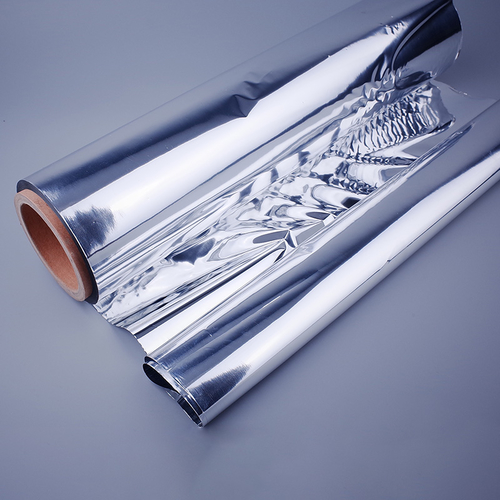Candy Twist Film
Material:Plastic Film
Plastic has become an indispensable part of modern life, and among its many forms, plastic film plays a crucial role in packaging, manufacturing, and a variety of industrial applications. But what exactly is plastic film, and why is it so widely used? How does it benefit businesses and consumers, and what makes it superior to alternative materials? This article explores the types, functions, advantages, and applications of plastic film in today’s world.
What Is Plastic Film?
Plastic film refers to thin, flexible sheets made from synthetic polymers, such as polyethylene (PE), polypropylene (PP), polyvinyl chloride (PVC), polyethylene terephthalate (PET), and others. These films are manufactured through processes like extrusion, casting, or blown film techniques, producing sheets of varying thickness, transparency, and mechanical properties.
Plastic films are lightweight yet durable, resistant to moisture and chemicals, and highly versatile. They can serve as protective layers, packaging material, barrier films, or industrial liners, depending on their composition and manufacturing process.
How Does Plastic Film Work in Packaging and Industry?
Plastic film provides a protective barrier that preserves the quality and integrity of products. In packaging applications, it prevents exposure to moisture, dust, oxygen, and contaminants, extending the shelf life of food, pharmaceuticals, and consumer goods.
The film can be heat-sealed, laminated, or printed with product information, branding, and regulatory labels. Its flexibility allows it to conform to different shapes and sizes, reducing the need for rigid containers. In industrial applications, plastic films serve as vapor barriers, protective covers, insulation layers, or packaging wraps, ensuring products are safe during transportation and storage.
What Are the Key Advantages of Plastic Film?
Plastic films offer numerous benefits that make them essential in modern applications:

Lightweight and Cost-Effective
Compared to glass, metal, or paper packaging, plastic films reduce material usage and transportation costs.
Durability and Strength
Resistant to tearing, puncture, and environmental factors, plastic film protects products effectively.
Moisture and Chemical Resistance
Prevents spoilage, corrosion, or contamination, especially important for food and chemical products.
Transparency and Printability
Offers clear visibility for product display and allows high-quality printing for branding and labeling.
Flexibility and Versatility
Suitable for wrapping irregularly shaped items or forming complex multilayer structures.
Recyclability
Many plastic films, particularly PE and PP types, can be recycled, contributing to sustainability efforts.
Barrier Properties
Specialty films can be engineered to block oxygen, UV light, or moisture, protecting sensitive products like electronics, food, and pharmaceuticals.
These advantages make plastic film one of the most widely used materials in packaging, manufacturing, and industrial applications globally.
What Are the Common Applications of Plastic Film?
Plastic film is highly versatile and finds use in numerous sectors:
Food Packaging
Wrapping, pouches, vacuum-sealed packs, and stretch films to preserve freshness and prevent contamination.
Medical and Pharmaceutical Packaging
Protective films for sterile instruments, blister packs, and laminated pouches for drugs.
Industrial Applications
Protective covers, insulation layers, shrink wraps, and barrier films in manufacturing processes.
Consumer Products
Plastic bags, shopping bags, and flexible packaging for electronics or household goods.
Construction and Agriculture
Vapor barriers, greenhouse films, mulching films, and protective sheets during building projects.
Plastic film’s adaptability ensures it serves multiple industries efficiently and reliably.
How Does Plastic Film Compare to Alternative Materials?
Compared to traditional materials like glass, paper, or metal, plastic film offers several distinct advantages:
Lightweight: Reduces shipping and handling costs.
Flexible: Conforms to irregular shapes and protects fragile items.
Durable: Resistant to moisture, tearing, and environmental damage.
Cost-Effective: Less expensive to produce and transport than rigid packaging.
Customizable: Can be printed, laminated, or coated for specialized purposes.
While concerns about environmental impact exist, innovations in recyclable, biodegradable, and compostable films are helping to address sustainability challenges.
What Should Be Considered When Choosing Plastic Film?
Material Type
PE, PP, PVC, PET, or multilayer laminates depending on strength, barrier, and flexibility requirements.
Thickness and Gauge
Select based on the weight and fragility of the product being packaged.
Barrier Properties
Oxygen, moisture, UV, or chemical resistance as required for the application.
Transparency and Printability
Important for branding, labeling, or product visibility.
Environmental Considerations
Recyclable or biodegradable films help reduce environmental footprint.
Careful selection ensures optimal protection, performance, and sustainability for the intended application.
Final Thoughts: Are Plastic Films Worth the Investment?
The answer is a clear yes. Plastic films provide lightweight, durable, versatile, and cost-effective solutions for packaging, industrial, and consumer applications. Their ability to protect products, extend shelf life, and support branding makes them indispensable in modern industries.